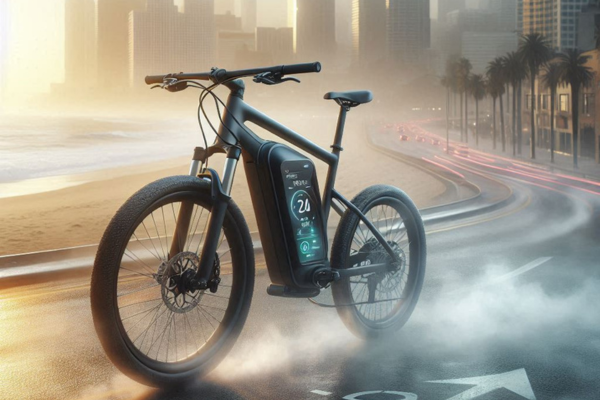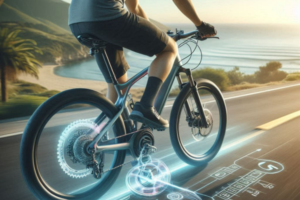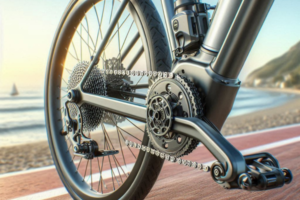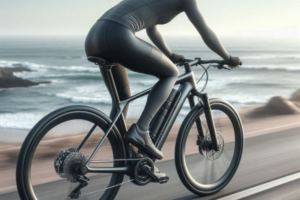When it comes to electric bicycle performance, most riders focus on hardware: the motor, battery, tires, and frame. But there’s another set of factors that can quietly impact your speed and power — the weather conditions, particularly temperature and humidity. In coastal regions, where both variables tend to fluctuate daily, understanding their effects is key to maintaining optimal riding efficiency. In this article, we’ll explore how environmental conditions affect your e-bike’s behavior and how you can adapt your riding strategy for better performance.
🌞 Temperature: More Than Just Comfort
Battery Efficiency in Different Temperatures
Your e-bike battery is sensitive to temperature. Most lithium-ion batteries operate best between 15°C and 25°C (59°F to 77°F). Outside of this range, efficiency drops. In colder temperatures, the chemical reactions inside the battery slow down, resulting in reduced power output and shorter range. In extreme heat, internal resistance increases, and the battery may throttle performance to avoid overheating.
If you notice your e-bike feeling sluggish on very hot or cold days, it’s likely not your imagination — it’s science. The battery is adjusting to protect itself, and as a result, your top speed or acceleration may decrease.
Motor Temperature and Thermal Protection
Just like batteries, motors generate heat and can be affected by external temperatures. On hot days, your motor may trigger thermal limiting to prevent overheating, which temporarily reduces power. This is especially common when climbing hills or using high assist modes in warm, humid climates.
To ride smarter in these conditions, reduce assist levels during intense heat, take short breaks, and avoid long climbs when possible. It’s all about balance — preserving your motor and maintaining efficiency.
💧 Humidity: The Hidden Performance Factor
How Moisture Affects Electrical Components
High humidity can lead to moisture accumulation on sensitive components like the controller, connectors, and display. While most e-bikes are water-resistant, they’re not waterproof. Consistent exposure to humidity can increase the risk of corrosion or minor electrical irregularities, which can subtly affect throttle responsiveness or sensor readings — and ultimately, your speed.
Rolling Resistance and Road Texture
Humidity doesn’t only affect electronics — it changes the surface you ride on. Coastal roads often stay damp, even after rain has stopped, leading to slightly higher rolling resistance. Tires can lose grip or slip slightly, requiring more energy to maintain speed, especially during acceleration or uphill riding.
To counteract this, make sure your tires are properly inflated and suited for humid environments (semi-slicks or hybrid tread). Also, maintain your chain and gears well-lubricated with anti-moisture products to ensure smooth power delivery.
🔋 Combined Effects: What Happens in Hot and Humid Conditions?
Hot and humid climates — typical of many coastal cities — present a unique challenge. Your battery may heat up faster, your motor may limit output, and your grip on the road may be compromised. The result? Lower than expected speed and acceleration despite full charge and no apparent mechanical issues.
Understanding this helps avoid frustration. It’s not your fault or your bike’s — it’s the environment. The key is to adjust expectations and adapt riding style accordingly.
🚴 Rider Strategy: How to Adapt for Consistent Speed
Pre-Ride Preparation
If possible, store your battery indoors at room temperature. Before heading out, check local weather data — temperature, humidity, and wind. Plan your route with shade, wind direction, and terrain in mind.
Adjust Assist Mode Based on Conditions
Use eco or mid-assist on very hot or humid days to avoid overheating components. High-assist modes can be used in short bursts but may stress the system under extreme conditions. Smart assist usage preserves both speed and hardware.
Take Advantage of Early Morning or Late Afternoon
These times usually offer cooler temperatures and lower humidity, especially in coastal areas. Riding during these windows can improve battery efficiency and rider comfort — both of which support maintaining a higher average speed.
🛠️ Maintenance Tips to Counter Weather Effects
Weather may be out of your control, but smart maintenance habits can reduce its impact:
- Dry and clean your bike after humid rides, especially connectors and metal parts.
- Use dielectric grease on exposed connectors to prevent corrosion.
- Inspect your battery and controller monthly for signs of moisture damage.
- Lubricate your chain and gears with anti-humidity formulas.
These small actions contribute to long-term performance and sustained riding speed, regardless of coastal conditions.
💬 Final Thoughts
Temperature and humidity are powerful forces that can affect how your e-bike performs, especially in regions close to the sea. From battery efficiency to motor response and tire grip, each component reacts to the environment. By understanding these effects and adjusting how you ride, you can optimize speed, protect your equipment, and ride with confidence — no matter the forecast.
Have you noticed how weather impacts your e-bike rides? Share your experience in the comments and let’s build smarter strategies together!



